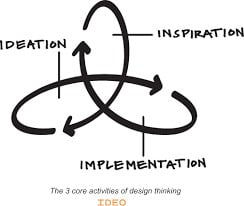There’s a lot in common with these methods and mindsets
The phrases User-Centered Design, Human-Centered Design, and Design Thinking are bandied around a lot these days. Are they distinct processes? Are they the same thing?
Some might argue the slight differences or nuances between these terms and their origin. There is more in common between these methods than there are differences and can likely be used interchangeably at this point.
In a nutshell: Human-centered design, user-centered design, and design thinking start from the same belief: the user — and empathy and understanding for that user — should be at the heart of all design decisions.

What is Design Thinking?
Design thinking is an approach to creative problem-solving with the basic idea being that teams can work together to create innovations that lead to better solutions, more streamlined processes, and improved quality. It is used to create products and services that need to meet the needs of a particular group of people. Design thinking is a specific set of tools used to discover problems worth solving and generating new solutions to those challenges with the user top of mind.

The process usually involves a team working together to observe, identify, and understand particular problems or challenges that a target group face. Often, that team brings a diverse set of skills and knowledge because more perspectives can lead to unexpected thinking and better potential solutions.
Design thinking also generally involves a lot of experimentation and prototyping of potential solutions, which can be tested with users.

In design thinking, practitioners take into consideration many factors; in particular, they look for the intersection of ideas that are feasible (technically possible), desirable (attractive to the end user), and viable (profitable to the business.)
IDEO, the famed design consultancy, breaks the core activities of design thinking into three parts: Inspiration, Ideation, Implementation.

- Inspiration: Get inspired by your problem space and, especially, by the wants, desires, and unmet needs of your users or customers.
- Ideation: Generate lots of potential solutions to the challenge at hand. Test these ideas with users to get closer and closer to your final solution or recommendation.
- Implementation: Make your ideas real. But the process doesn’t stop there. Good designers should always be continually looking for inspiration, new ideas, and refining their work to make it better for the end-user.

What is Human-Centered or User-Centered Design?
Human-Centered or User-Centered Design is also a process that focuses on the users and their needs in every phase of the design process. The goal is to create a highly usable and desirable product or service for the user. Like design thinking, it stems from the belief that you should lead with empathy and design from that perspective.
Like design thinking, user-centered design stems from the belief that you should lead with empathy and design from that perspective.

Again, the steps and mindset are mostly the same as design thinking. The process can be described in many slightly different ways by different people or organizations, but usually boils down to some combination of these five steps:
1. Empathize: Understanding the end-user of the product, experience, or service.
2. Define: Articulate the core problems or challenges to solve.
3. Ideate: Brainstorm a diverse, and abundant, set of possible ways to solve the problem for the user.
4. Prototype: Build a simulation of your potential solution so you can begin to get reactions to your ideas.
5. Test: Put your prototype in front of your users and talk to them about what they like about it, what they don’t, and find out how they react to it. Use this feedback to make your ideas better.

More on user testing
Putting your ideas in front of “real” people is a fundamental aspect of user-centered design. In the final step, you test your ideas. User testing can be as simple as asking five users to come to your office (or do this remotely) and show them your prototype. It’s crucial to approach it with an open mind and not be overly-attached to your ideas. You want genuine reactions from the people who will ultimately use your product or service so you can make it better.
We have tons of great resources for supporting user interviews. Check out our tips for successful user interviews and our handy-dandy moderator guide.
All about empathy
In the end, it’s a bit like splitting hairs to find the significant differences between design thinking, user-centered design, and human-centered design. They all begin with a deep belief that our design and business decisions should first start from an understanding of and empathy for our end user.




